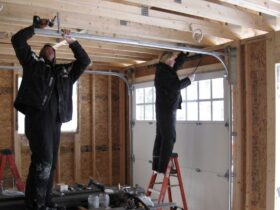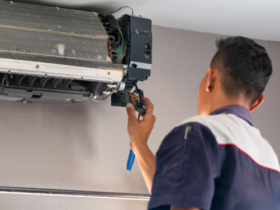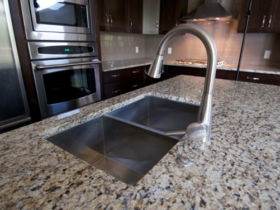As you run out to pick up your selection of tools, it’s important to know the distinctions between different options. If you’re not aware of these things, you might make mistakes that will cost you time, money, and effort.
We’re going to discuss the difference between brushless vs. brushed motor drills today. Hopefully, the information below can give you some idea of what to buy.
Let’s get started.
Understanding The Brushless vs. Brushed Motor
Let’s start with the basics of how drills work. All drills have a motor that has to be rotated with some kind of self-generating force.
In most cases, there are two oppositely charged magnets that have to propel each other. These two magnets attract one another, but they’re both held apart and attached to components of the drill.
The drill has these various magnets situated in such a way that the attractive force moves the components of the drill with a degree of force that will turn a screw.
The way that the magnet operates is different in electric motor brushes than it is in brushless motors.
Brushed Motor Drills
Drills are composed of something called an armament. This is the circular piece of the drill that generates most of the rotation. Each section of the armament contains a different magnet that receives a charge as the drill spins.
Each section also has a brush that spins along, transferring the magnetic charge each time it passes the electronic controller at the bottom of the armament. The result is that the charge keeps changing, pushing the drill along at various speeds that are commanded by the electronic controller.
So, the electric charge of a brushed motor is adjusted constantly as the drill spins, keeping the magnets in a state of attraction that produces high-speed rotations.
You can look for more information on DC brushed motor function if you need to.
Brushless Motor Drills
In the case of a brushless motor, the drill has to find a new way of adjusting charges to keep perpetual motion flowing.
The drill adds an electric controller on the other side of the armament to change the electric charges contained within the magnets. In brushed drills, the fundamental charges are conducted in an old-fashioned way.
Metal brushes do the work by conducting and changing the charge with a little help from the computer. In the brushless, the computer sends signals at a very high rate to allow the armament magnets to change charge and stay attracted to each other in a way that makes the drill spin.
Brushless drills tend to be more efficient and require less maintenance. They also produce less heat as a result of the reduced friction involved in the process.
Want to Learn More About Tool Technology?
Hopefully, the information above gave you some insight into the tools you should choose for your next trip to the hardware store. There’s a lot more to learn about brushless vs. brushed motor technology if you’re planning on doing a number of projects, though.
We’re here to help. Explore our site for more insight into tool technology so that you can make the best purchases for your situation.











